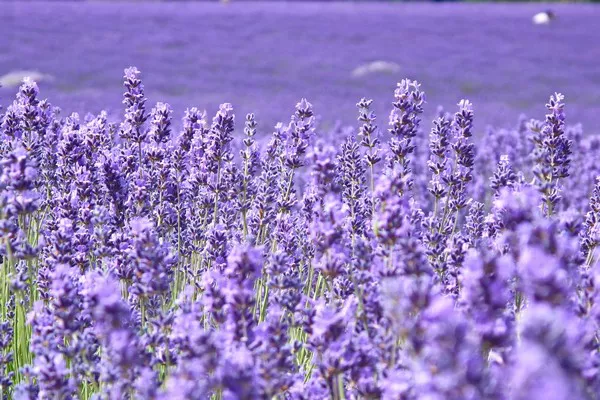In the enchanting world of perfumery, the art of fragrance creation is a delicate dance, with flowers playing a central role in composing olfactory masterpieces. Each bloom brings its unique essence, contributing to the intricate blend that defines a fragrance. In this aromatic journey, we delve into the science and artistry behind perfumes, exploring the top eight flowers that serve as pillars in the fragrance industry.
Top 8 Flowers Used in Fragrances
1. Rose (Rosa spp.):
Roses have been an iconic symbol of love and beauty for centuries, and their presence in perfumery is equally enduring. The scent of roses is complex, composed of various compounds like geraniol, citronellol, and phenylethyl alcohol. These compounds contribute to the floral, slightly sweet, and richly romantic aroma associated with roses.
Popular Fragrances Featuring Rose
According to fragrance sales data, rose-based perfumes consistently rank among the best-sellers globally. The timeless allure of rose fragrances is evident in classics like Chanel No. 5 and modern creations such as Lancôme La Vie Est Belle.
2. Jasmine (Jasminum spp.):
Jasmine, often referred to as the “Queen of the Night,” unfolds its intoxicating aroma after sunset. The fragrance of jasmine is characterized by compounds like benzyl acetate, linalool, and indole, creating a heady, sweet, and slightly animalic scent. This exotic bloom adds a touch of seduction to perfumes.
Data on Jasmine’s Popularity
Sales and market analysis reveal that jasmine-infused fragrances experience heightened demand, particularly in regions with a cultural affinity for jasmine. Perfumes like Dior J’adore and Givenchy Amarige highlight the timeless appeal of jasmine.
3. Lavender (Lavandula spp.):
Lavender’s aromatic profile is rooted in compounds like linalool, linalyl acetate, and camphor, giving it a distinctive herbal, floral, and slightly camphorous scent. Lavender’s versatility in perfumery lies in its ability to provide a calming effect while maintaining an elegant fragrance.
Consumer Preference for Lavender
Market surveys indicate a growing preference for lavender-infused fragrances, especially in products associated with relaxation and well-being. Brands like Jo Malone and Acqua di Parma incorporate lavender in their offerings, aligning with consumer demand for soothing scents.
4. Lily of the Valley (Convallaria majalis):
Lily of the Valley exudes a delicate, fresh, and green fragrance characterized by compounds like lilial, hydroxycitronellal, and alpha-isomethyl ionone. This bloom, often associated with spring, imparts a sense of innocence and purity to perfumes.
Market Trends Reflecting Lily of the Valley’s Allure
Consumer insights indicate a consistent appreciation for Lily of the Valley in fragrances. Classic scents like Diorissimo by Christian Dior and Muguet du Bonheur by Caron showcase the timeless appeal of this delicate bloom.
5. Peony (Paeonia spp.):
Peony’s fragrance is a blend of compounds like citronellol, geraniol, and various floral ketones, creating a sweet, rosy, and sometimes spicy aroma. Its association with romance and femininity positions peony as a sought-after floral note in perfumery.
Consumer Demand for Peony-Infused Fragrances
Market studies reveal an increasing demand for peony-centric perfumes. Fragrances like Viktor & Rolf’s Flowerbomb and Jo Malone’s Peony & Blush Suede cater to consumers seeking the enchanting allure of peonies.
6. Orchid (Orchidaceae):
Orchids, with their diverse species, offer a range of fragrances from sweet and powdery to exotic and spicy. Compounds like vanillin, benzyl acetate, and various floral esters contribute to the mystique surrounding orchid fragrances, adding an element of intrigue to perfumes.
Market Resonance of Orchid-Inspired Scents
Analysis of fragrance trends indicates a growing interest in orchid-infused perfumes. Notable examples include Tom Ford’s Black Orchid and Gucci Bloom, highlighting the allure of this enigmatic flower.
7. Violet (Viola odorata):
Violet’s scent, attributed to compounds like ionones, methyl ionones, and benzyl acetate, is delicate, sweet, and slightly powdery. This unassuming bloom adds a subtle floral whisper to perfumes, often serving as a harmonizing note in complex compositions.
Consumer Appeal for Violet Fragrances
Consumer preferences for light and delicate scents have elevated violet-infused fragrances. Classics like Guerlain’s Insolence and Balenciaga’s B. Balenciaga highlight the timeless charm of violet in perfumery.
8. Gardenia (Gardenia jasminoides):
Gardenia emits a sultry, creamy, and narcotic fragrance, attributed to compounds like beta-ionone, benzyl acetate, and various lactones. This white blossom’s complex aroma evokes feelings of sensuality and opulence, making it a coveted note in high-end perfumery.
Luxury Perfumes Featuring Gardenia
Market analysis underscores the association of gardenia with luxury and sophistication. Fragrances like Chanel’s Gardenia and Tom Ford’s Velvet Gardenia showcase the timeless elegance of this sultry white bloom.
See Also: 10 Best Flowers For Your Summer Garden
Conclusion:
As we unravel the aromatic symphony woven by these eight flowers, it becomes evident that perfumery is a harmonious blend of art and science. The chemistry of fragrance compounds, coupled with consumer preferences and cultural influences, shapes the landscape of the fragrance industry. The timeless appeal of roses, the seduction of jasmine, the calming aura of lavender, the innocence of Lily of the Valley, the romance of peonies, the enigma of orchids, the subtlety of violets, and the opulence of gardenias collectively create a diverse and captivating array of floral notes in perfumery. In each bloom lies a story, and in each fragrance, a masterpiece crafted to evoke emotions and memories, transcending time and trends in the ever-evolving world of perfumery.
You Might Be Interested In:










![10 Most Richest Cities in the United States [Revealed!]](https://www.validdownloads.com/wp-content/uploads/2023/12/Manjula-Pothos.webp)














